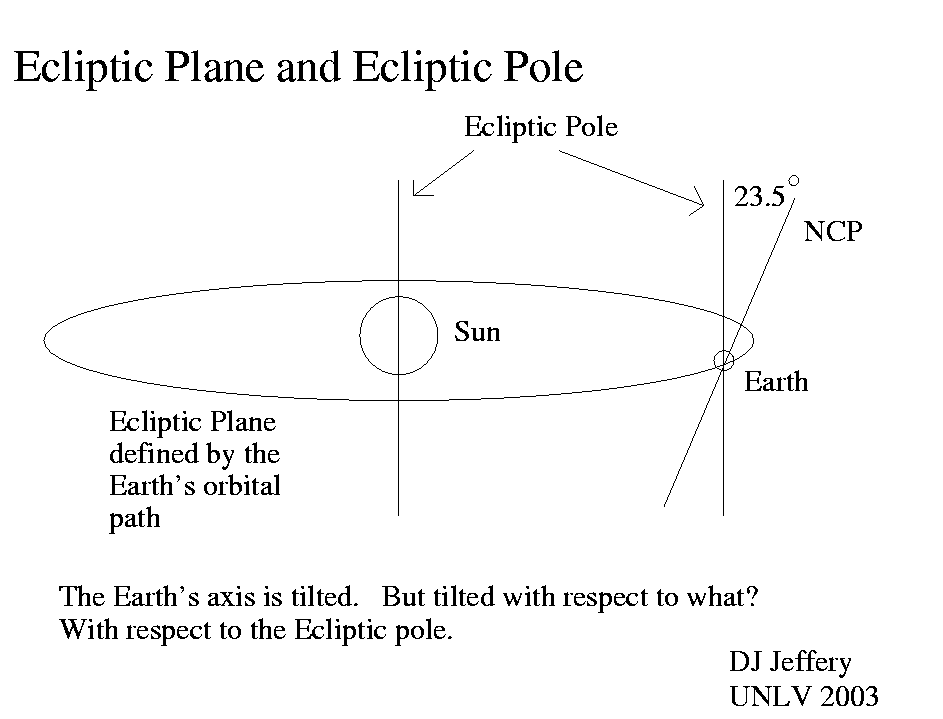
Caption: The ecliptic plane, the ecliptic axis (AKA the ecliptic pole) the celestial axis (indicated by the line to the north celestial pole (NCP)), and the Earth's axial tilt.
Features:
- The ecliptic plane
has a perpendicular which we can call the
ecliptic axis
(or ecliptic pole).
- Everyone knows there
Earth's axis
has a tilt, mostly they don't know what it is tilted with respect to.
It's tilted with respect to the
ecliptic axis.
- The axis of the
Earth
is CURRENTLY tilted from the
ecliptic axis
by ∼ 23.4°
(see Wikipedia: Axial tilt:
Earth's axial tilt)---the
value 23.5° is commonly cited, but that is just a rounded approximation.
Note the Earth's axial tilt in the image is approximate.
- To be more precise, at the epoch
J2000.0
(i.e., nearly the start of year 2000), the
Earth's axial tilt was
23°26'21.4119'' = 23.43928108° ≅ 23.4°
(see
Earth Orientation Center: Useful Constants).
Currently, the Earth's axial tilt
is decreasing by ∼ 47'' per century
(see Wikipedia: Axial tilt: Earth).
This means the Earth's axial tilt
will be ∼ 23.2° in
4000 CE.
The time variation of the Earth's axial tilt is due to astronomical perturbations.
- The Earth's axis direction
over human lifetime is approximately
constant.
However, there is a slow
precession
relative to the
observable universe due to
astronomical perturbations.
A precession
is the sweeping out of a cone
or a double-cone
by an axis.
The Earth's axial
precession is just called the
axial precession (AKA
precession of the equinoxes).
It has a period of order 26000 years, but there is NO exact period
since the
astronomical perturbations
are always slightly changing rate of
the precession.
Image link: Itself.
Local file: local link: ecliptic_plane.html.
File: Solar system file: ecliptic_plane.html.